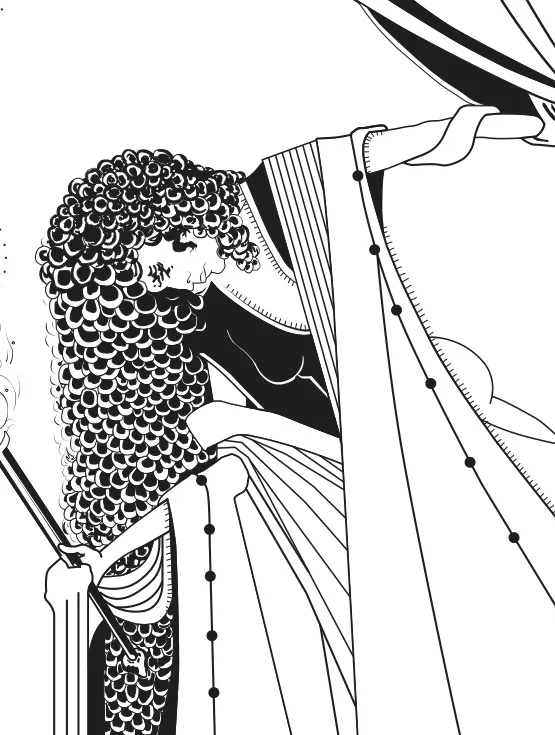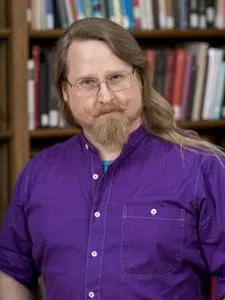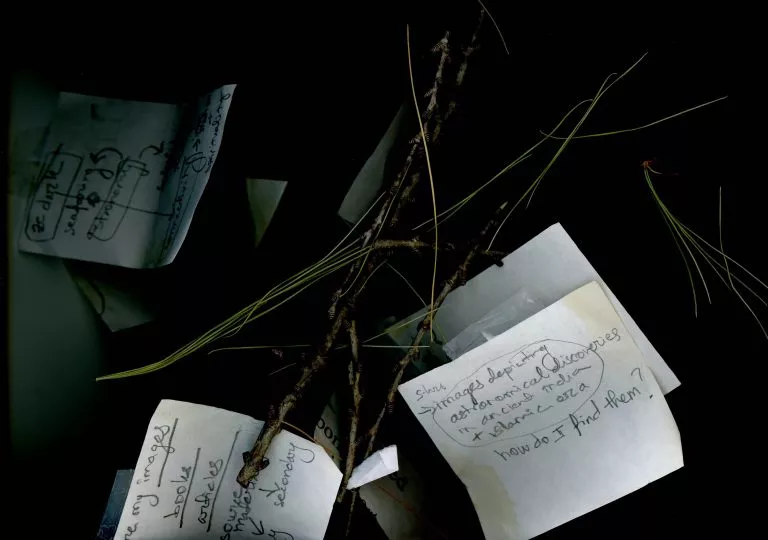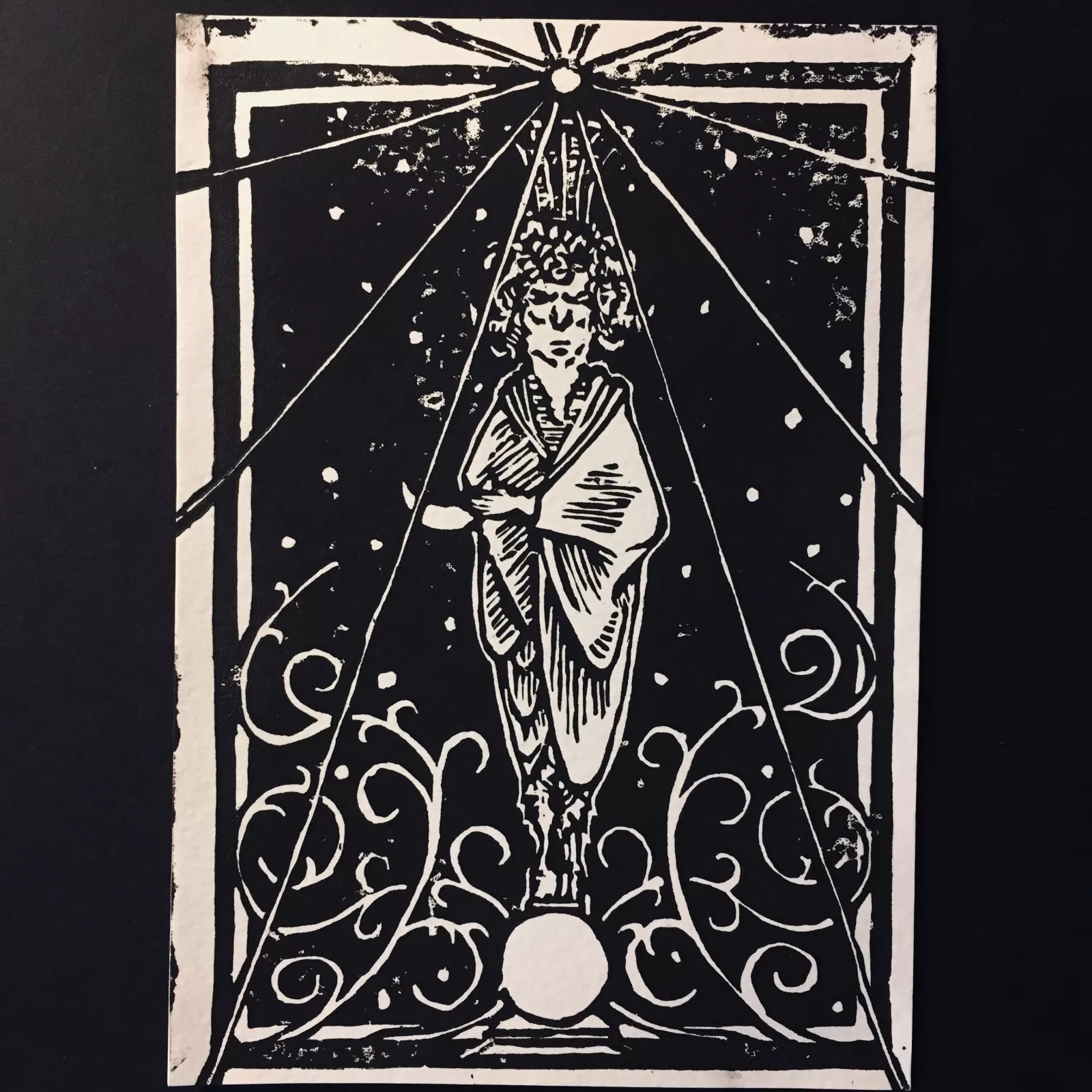Reveling in Night at the 12th Biennial Graduate Group in Archaeology, Classics, and History of Art Student Symposium

On November 15-16, 2019 graduate students of the Graduate Group in Archaeology, Classics, and History of Art hosted the 12th Biennial Graduate Group Symposium. This year’s theme was Irresistible Night, Ageless Dark: the nocturnal in image, text, and material culture.
The symposium featured a two-day graduate student conference, a student-curated exhibition The Illuminated Night, and the commissioned performance by Philadelphia artist Nishat Hossain A History of Darkfinding. Each component revolves around a theme chosen by a committee of graduate students in the graduate group. Keynote addresses were given by Radcliffe Edmonds III, Paul Shorey Professor of Greek, Latin, and Classical Studies here at Bryn Mawr, and Professor Noam Elcott, Associate Professor and Chair of Art Humanities at Columbia University.
The conference asked its speakers and artist to consider how does night’s darkness factor into the realities of human experience? While the dark of night is integral to human physiology and cultural rhythms, the phenomenon of night has come to develop its own symbolic syntax that transcends various forms of art, genre, and ritual. Irresistible Night, Ageless Dark was an exploration and celebration of night in all of its modes of cultural reception.
The Bryn Mawr College Graduate Group Symposium is a biennial event sponsored by Bryn Mawr’s Graduate Group in Archaeology, Classics, and History of Art. Initiated in 1997, each symposium is organized and lead entirely by graduate students with the goal of facilitating interdisciplinary scholarship between graduate students in Archaeology, Classics, History of Art and all related fields.
On November 15 Professor Radcliffe Edmonds III gave the keynote lecture, “First-Born of Night or Oozing from the Slime? Deviant Origins in Orphic Cosmogonies.” His keynote addressed varied and diverging accounts of fundamental questions of ancient Mediterranean Orphic cosmogony and ontology – the published version of which is forthcoming in the book Between Dusk and Dawn: Valuing Night in Classical Antiquity (Brill). His talk was presented in co-ordination with the Bryn Mawr Classics Colloquium.
On November 16 Professor Noam Elcott delivered the keynote lecture, “A Brief History of Artificial Darkness and Race,” was an addendum to his 2016 book Artificial Darkness: An Obscure History of Modern Art and Media. His talk looked into the ways in which technology and spectacle were implicated in 19th century photography and theater, and early cinema, to perpetuate racial stereotypes in art. He also discussed the use of technology in these same genres that promoted Reconstruction era civil rights for black Americans.
November 16 also featured the performance A History of Darkfinding by artist Nishat Hossain. Nishat’s performance challenged the format of academic conferences by juxtaposing a lecture on ancient Indian contributions to astronomy with self-care rituals designed to help them survive the colonial and imperialist institutionalization of capitalism, art, science, and academia.
The exhibition The Illuminated Night, ongoing on the Second Floor of Canaday Library, is a multidisciplinary investigation brings together archaeological artifacts, artistic representations, and classical texts which evoke the utilitarian, ritual, and symbolic uses of light. All objects are from Bryn Mawr College’s Art and Artifacts Collections. The exhibition celebrates the varied ways in which people illuminate the night to navigate through the dark paths of nocturnal experience.
The conference programming of talks explored night from a variety of perspectives and disciplines by speakers from across the United States. Five Bryn Mawr graduate students spoke at the conference. In his talk “Let there be Night: Lightness and Darkness in Longinus’s On the Sublime,“ Robert J. Barnes (Classics) discussed extreme lightness and darkness in chapter 9 of Longinus’ treatise to explore the way in which sublimity in Homer evoked the sublime experience of initiation in ancient Greek mystery rites. A talk by Jenni Glaser (Classics) titled “Walking on Air and Scorning the Moon: Aerial Encounters in Aristophanes’ Clouds and Lucian’s Icaromenippus” was an exploration of intersecting lunar imagery in these two works. Taylor Hobson (History of Art) gave the talk “Douglas Gordon’s Between Darkness and Light and the Luminous Double Bind of Projection” in which he spoke about the cinematic experience of light and dark in this author's work and its effect of the suppression of reality. Emily Leifer's (History of Art) “Seeing with Darkness: Maria Nordman’s Saddleback Mountain (1973)” explored the phenomenology of Nordman’s installation and the possible ways in which it decentered the viewer’s sense of self in the natural world. Zach Silvia (Archaeology) spoke about the symbolic dimensions of lapis lazuli as a signifier of the night’s sky and its importance in ancient Mesopotamian divination and cosmology in the talk “Bel-Marduk’s Celestial Dais: The Importance of Lapis Lazuli in Mesopotamian Cosmic Order.”
The Bryn Mawr Graduate Group Symposium chairs were Elena Gittleman, Zach Silvia, and Audrey Wallace. The symposium was overseen by Graduate Group of Archaeology, Classics, and History of Art director and Classics Annette Baertschi. Olivia Hopewell, Emily Liefer, Yusi Liu, Clare Rasmussen, and Michelle Smiley each served as panel chairs. The symposium committee was Elena Gittleman, Jenni Glaser, Meg Hankel, Olivia Hopewell, Clare Rasmussen, Zach Silvia, Michelle Smiley, Mary Somerville, and Audrey Wallace. Elena Gittleman and Matthew Jameson served as chairs of The Illuminated Night exhibition. The exhibition committee consisted of Kate Dolson, Elena Gittleman, Jenni Glaser, Yusi Liu, and Matthew Jameson.



